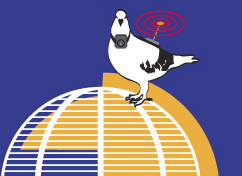indigenous, commons, internet, property, belonging, colonize, stories, networks, webs of trust, cyberspace Indigenous Domain discusses the limitations of current colonial paradigms for cyberspace which try to rope off "commons" or "reservations" for the public good, but which still operate within a larger colonial framework. The paper proposes alternatives to the prevailing colonial paradigm of the "commons" and "copyleft" based on both indigenous models and new digital practices including "grounded stories," "indigenous networks," and "webs of trust." Finally, I look at a local Acess Grid art project in the Wabanaki community which combines all three of these indigenous/digital approaches.
Abstract Indigenous Domain looks at the prevailing colonial paradigm for imagining and navigating cyberspace ("frontier" "cowboys" "wild") and traces its origins in the enclosure movement and the privatization of land and natural resources among settlers of North America. While the "Commons", "Indian Reservations", and "Nature Reserves" were meant to protect communities, Indigenous populations, and natural resources, they failed in real space and also endanger cyberspace. Instead of "ownership" or "property", a more sustainable model for relationship to land, and therefore cyberspace, might be found in a sense of "belonging," an Indigenous understanding of reciprocal relationships with the ecosystems that sustain life in a given bioregion. While some scholars, like Jerry Mander (In the Absence of the Sacred, the Failure of Technology and the Survival of the Indian Nation), worry that technology, by its very nature, undermines Indigenous Lifeways, others like David Abram (The Spell of the Sensuous), believe that appropriate uses of technology can usher in "a regionally-diverse and interdependent web of largely self-sufficient communities--a multiplicity of technologically sophisticated, vernacular cultures tuned to the structure and pulse of particular places." Recent developments in cyberspace echo Abram's hopes for a connected, ritual use of this powerful technology. These include grounded stories, indigenous networks, and webs of trust. In the Presence of the Sacred, a local art project in the Wabanaki community combines all three approaches. The project supports interactive storytelling ceremonies, or "story braiding" between Wabanaki and local storytellers using Access Grid hi-bandwidth videoconferencing technology. While currently local, the Wabanaki storybraiders are eager to connect their stories with those of other indigenous communities. |
